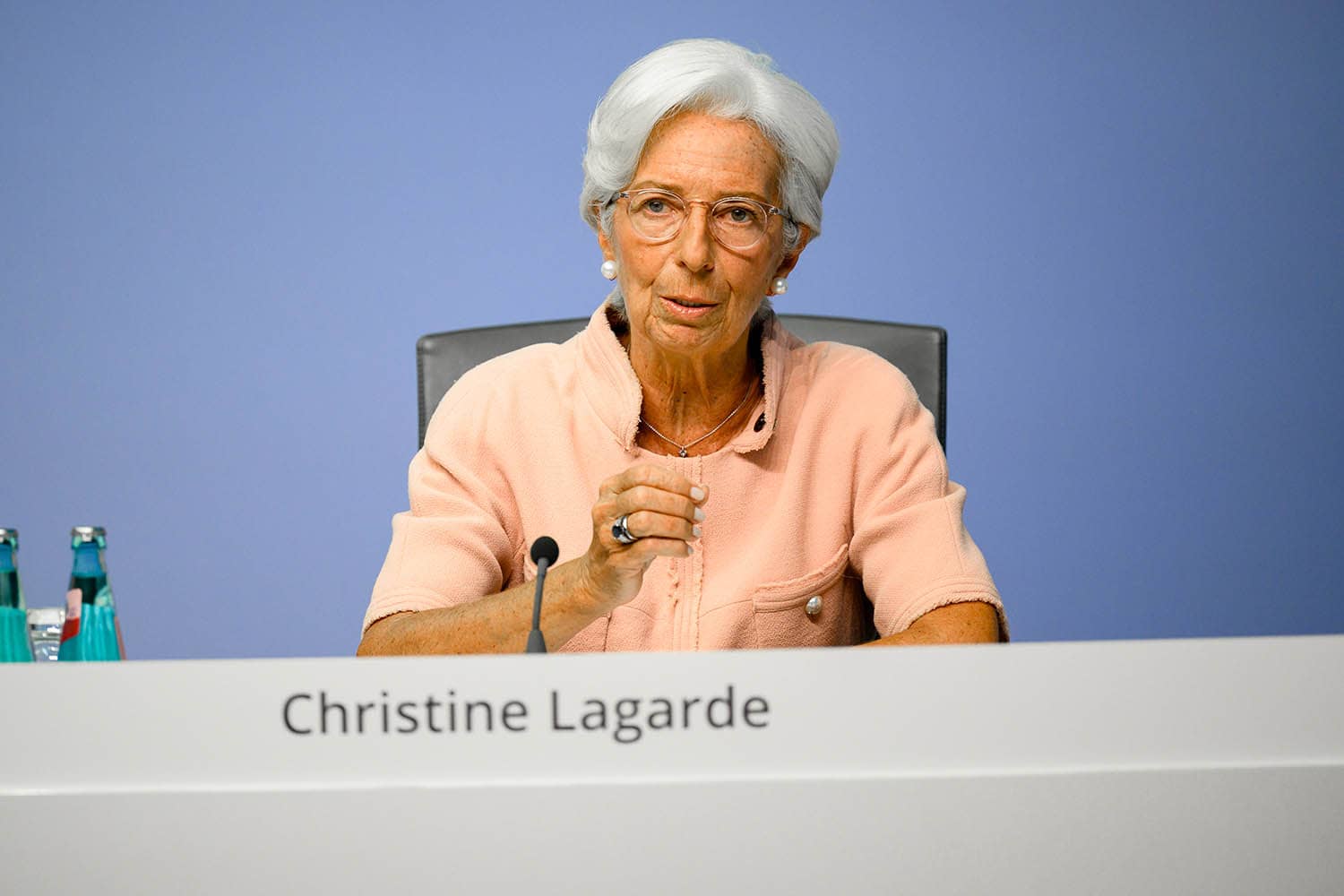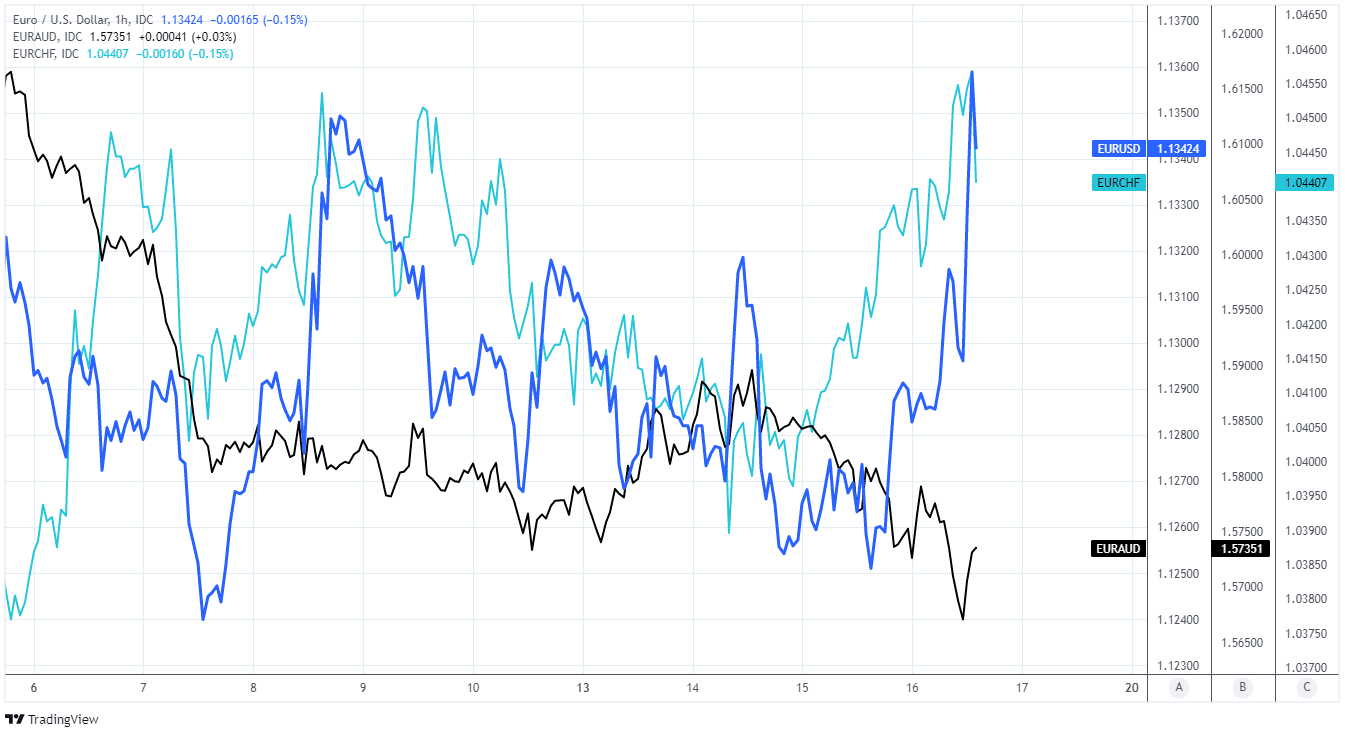Euro / Dollar Cheers ECB’s Step-by-Step to Phase Out PEPP
- Written by: James Skinner
-
- ECB PEPP to end in March, APP temporarily increased
- Six month phase out more than halves QE purchases
- Original APP set to continue at €20BN from Oct 2022
- EUR/USD through 1.13 but seen struggling near 1.14

File image of ECB President Christine Lagarde. Photo by Sanziana Perju / European Central Bank.
The Euro to Dollar rate recovered above 1.13 on Thursday after the European Central Bank (ECB) unveiled its plan to wind down its pandemic-inspired quantitative easing programme, although some analysts say the single currency would likely begin to struggle upon any approach of 1.14.
Governing Council members agreed on Thursday to a step-by-step process to wind down the ECB’s €1.85 trillion Pandemic Emergency Purchase Programme using a temporary increase in the bank’s original bond buying operation, the Asset Purchase Programme, to bridge the gap.
The ECB is set to continue buying almost €100BN per month until the end of March 2022 when the PEPP programme will end with the original APP programme being stepped up to €40 billion per month for the duration of the second quarter and €30 billion for the third quarter.
After that point the original APP programme will resume at its earlier €20BN per month pace “for as long as necessary to reinforce the accommodative impact of its policy rates,” which could take until up to 2024 on the ECB’s most recent forecasts.
“[This] is an incremental step towards a more hawkish ECB – albeit a very watered down one,” says Mazen Issa, a senior FX strategist at TD Securities.
The ECB otherwise left rates charged or paid on its main refinancing operations, marginal lending facility and bank deposit facility left unchanged at 0.00%, 0.25% and -0.50% respectively, although prospects for an eventual increase may have improved with the ECB’s latest inflation forecasts.
Above: Euro-Dollar rate shown at hourly intervals with other selected Euro exchange rates.
- EUR/USD reference rates at publication:
Spot: 1.1340 - High street bank rates (indicative band): 1.0940-1.1023
- Payment specialist rates (indicative band): 1.1240-1.1280
- Find out about specialist rates, here
- Set up an exchange rate alert, here
- Book your ideal rate, here
President Christine Lagarde announced sweeping upgrades to the ECB’s forecasts for inflation over the coming years at Thursday’s press conference, with the annual rate seen at 2.6 percent for 2021, 3.2 percent for 2022 and 1.8 percent for both 2023 and 2024.
“Nevertheless, with such a broad array of inflation views on the governing council we expect it will be some time before rate hikes are on the table in the Euro Area,” says Paul Craig, a portfolio manager at Quilter Investors, following the ECB’s decision.
December’s forecast upgrades leave the annual rate of inflation within arm’s reach of the symmetric 2 percent target at the other end of the forecast horizon, and take the bank a step further in the direction of a long coveted policy goal.
They come after Eurozone inflation rose to a record high in November following sharp increases in energy costs as well as in a broad array of other prices, reflecting increases that are thought to result mainly for ongoing disruption to international supply chains.
“The decision, despite offering no major surprises like the one by the BoE, saw the euro rise to fresh weekly highs against the US dollar while German Bund yields also jumped. This is because it comes on the hawkish side of expectations,” says Simon Harvey, an analyst at Monex Europe.
{wbamp-hide start} {wbamp-hide end}{wbamp-show start}{wbamp-show end}
“It was unknown whether the ECB would actually announce a bridging mechanism for once PEPP expires given the uncertainties around Omicron and the recent lockdown measures in several eurozone countries,” Harvey also said on Thursday.
While the single currency benefitted from Thursday’s tapering announcement there was skepticism among analysts about whether it can sustain a rebound against the Dollar and other currencies due to still-increasing divergence between outlooks for interest rates in the Eurozone and elsewhere.
This is after the Federal Reserve announced on Wednesday that its $120BN per month quantitative easing programme will end with the March month in 2022 and warned using its dot-plot of policymakers’ own forecasts that U.S. interest rates are likely to rise on as many as three occasions.
“Over the medium-term and against the risk of the Fed conducting balance sheet run-off by the time the ECB even gets to €20bn/month in APP, while hiking at least 3 times and in relatively short order, it seems like EUR still lacks a definitive impulse next year,” says TD Securities’ Issa.
“Into year-end, 1.12/14 seems like the range to respect for EURUSD, while also being aware of the wedge that has so far largely encapsulated the range that typically resolves lower,” Issa and colleages also said.
Above: Euro-Dollar rate at daily intervals with Fibonacci retracements of September’s extension lower indicating likely areas of technical resistance.

